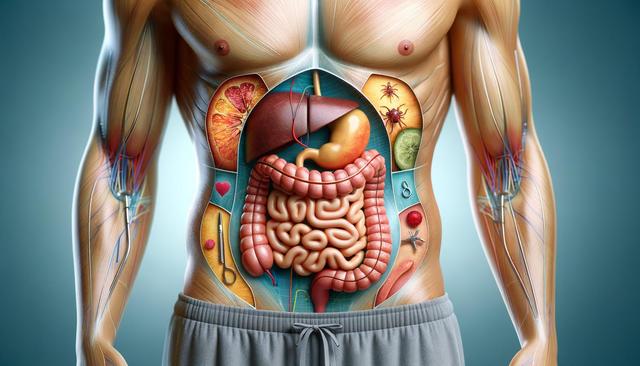
Explore the Benefits of Abdominoplastia
Understanding What Abdominoplastia Involves
Abdominoplastia, commonly referred to as a tummy tuck, is a surgical procedure designed to remove excess skin and fat from the abdominal area while also tightening the underlying muscles. This operation is often sought by individuals who have experienced significant weight loss, pregnancy, or aging, which can all contribute to a loss of skin elasticity and muscle tone in the midsection. The procedure is not a substitute for weight loss or a healthy lifestyle, but it can be an effective complement to those efforts when diet and exercise have not produced the desired body contour.
During the surgery, an incision is typically made along the lower abdomen, allowing the surgeon to remove loose skin and reposition or tighten separated abdominal muscles. The remaining skin is then pulled down and sutured into place, resulting in a smoother, firmer abdominal profile. While the recovery period can vary depending on the extent of the procedure, most individuals can expect to return to light activities within a few weeks.
Physical and Aesthetic Benefits
One of the most immediate and noticeable benefits of abdominoplastia is the improvement in abdominal appearance. This procedure helps flatten and shape the stomach area, which often leads to a more proportionate silhouette. However, the benefits go beyond cosmetic enhancement. By tightening the abdominal muscles, many patients also experience improved posture and core stability, which can reduce strain on the back and improve overall body mechanics.
Additional physical and aesthetic advantages include:
- Reduction of stretch marks, particularly those located on the lower abdomen
- Removal of excess skin that may cause irritation or hygiene issues
- Enhanced fit of clothing and improved body image
These changes can contribute significantly to a person’s confidence and satisfaction with their appearance, making abdominoplastia a transformative option for those struggling with midsection concerns.
Ideal Candidates for the Procedure
Although abdominoplastia can offer substantial benefits, it is not suitable for everyone. Ideal candidates are those in good overall health who maintain a stable weight and have realistic expectations about the results. Individuals who have completed their families and do not anticipate future pregnancies are often better suited for this procedure, as pregnancy can reverse some of the surgical outcomes.
Factors that typically indicate a strong candidacy include:
- Excess abdominal skin following weight loss or pregnancy
- Weakened or separated abdominal muscles
- Non-smokers or those willing to quit smoking before and after surgery
- Commitment to maintaining a healthy lifestyle post-surgery
Consultation with a qualified professional is essential to determine whether abdominoplastia aligns with an individual’s health profile and aesthetic goals.
Recovery and Post-Operative Care
Recovery from abdominoplastia requires time, patience, and proper post-operative care. Most patients can expect some degree of swelling, bruising, and discomfort in the first few days after the procedure. Pain management and rest are important during this initial period. Wearing a compression garment as recommended by the surgeon can help reduce swelling and support the healing tissues.
To promote a smooth recovery, patients are generally advised to:
- Avoid strenuous activities for at least six weeks
- Follow all surgical aftercare instructions closely
- Attend follow-up appointments to monitor healing
- Maintain a balanced diet to support tissue repair
It’s important to understand that final results may not be visible for several months, as the body continues to heal and adjust. Patience and adherence to medical guidance are key to achieving optimal outcomes.
Long-Term Results and Lifestyle Considerations
Abdominoplastia can produce long-lasting results when coupled with a balanced lifestyle. While the procedure provides a more toned and contoured abdomen, it is still crucial to maintain a healthy weight through regular physical activity and proper nutrition. Significant weight fluctuations after surgery can affect the longevity of the results.
Some long-term benefits of the procedure include:
- Improved self-image and body confidence
- Greater ease in performing physical activities
- Enhanced comfort in clothing and swimwear
It’s also worth noting that although scarring is an inevitable part of the process, most scars fade over time and can be strategically placed to be less noticeable. With proper care and sun protection, the visibility of scars can be minimized. Overall, individuals who take proactive steps to support their health are more likely to enjoy lasting satisfaction from their abdominoplastia experience.
Conclusion: Is Abdominoplastia Right for You?
Abdominoplastia offers both aesthetic and functional improvements for individuals dealing with loose abdominal skin and weakened muscles. While it is a surgical procedure that involves recovery and risks, many find the results to be rewarding and confidence-boosting. If you’re considering abdominoplastia, consulting with a trusted medical professional can help you determine if it aligns with your personal goals and health status. With the right preparation and post-operative care, abdominoplastia can be a meaningful step toward improved body confidence and physical well-being.